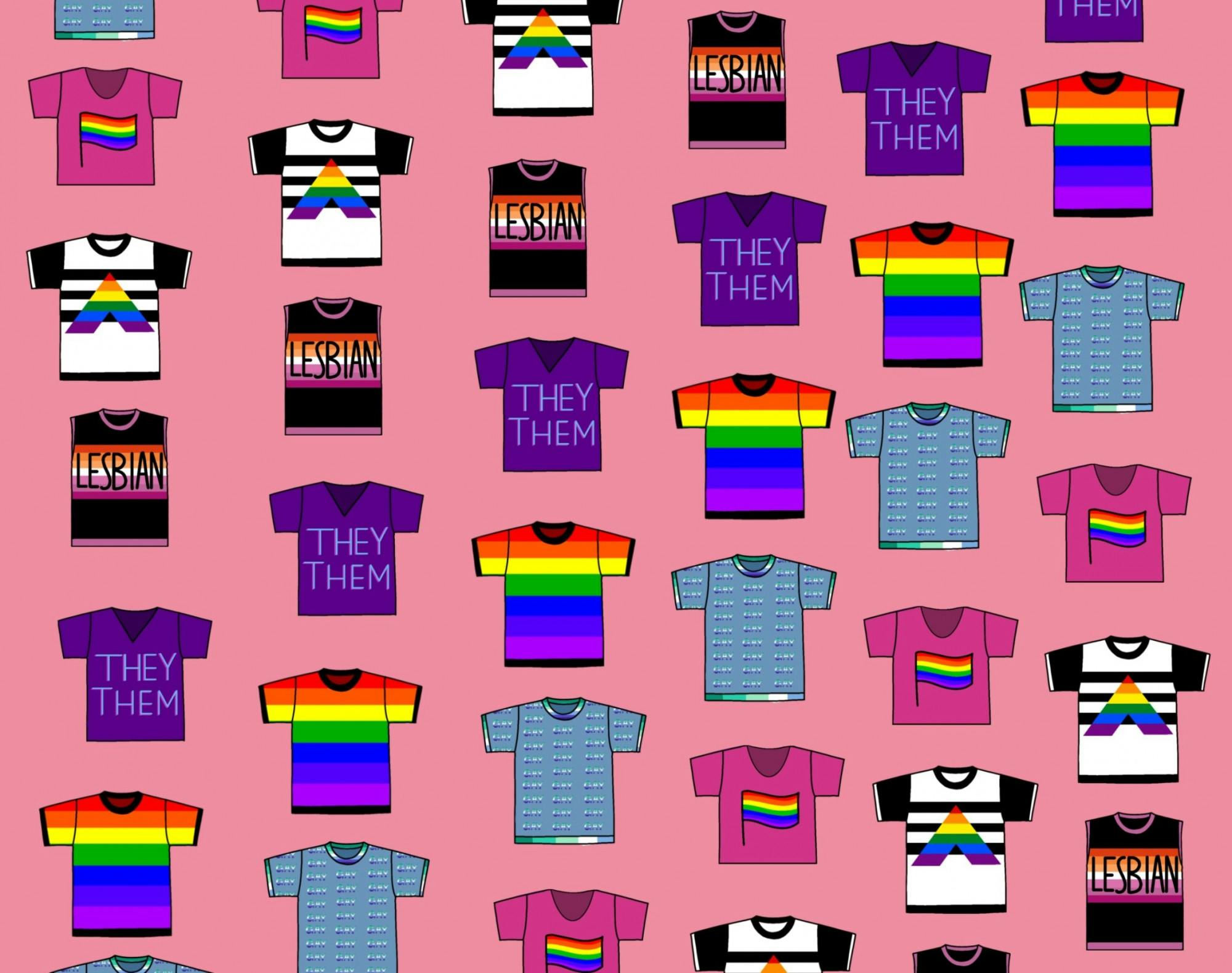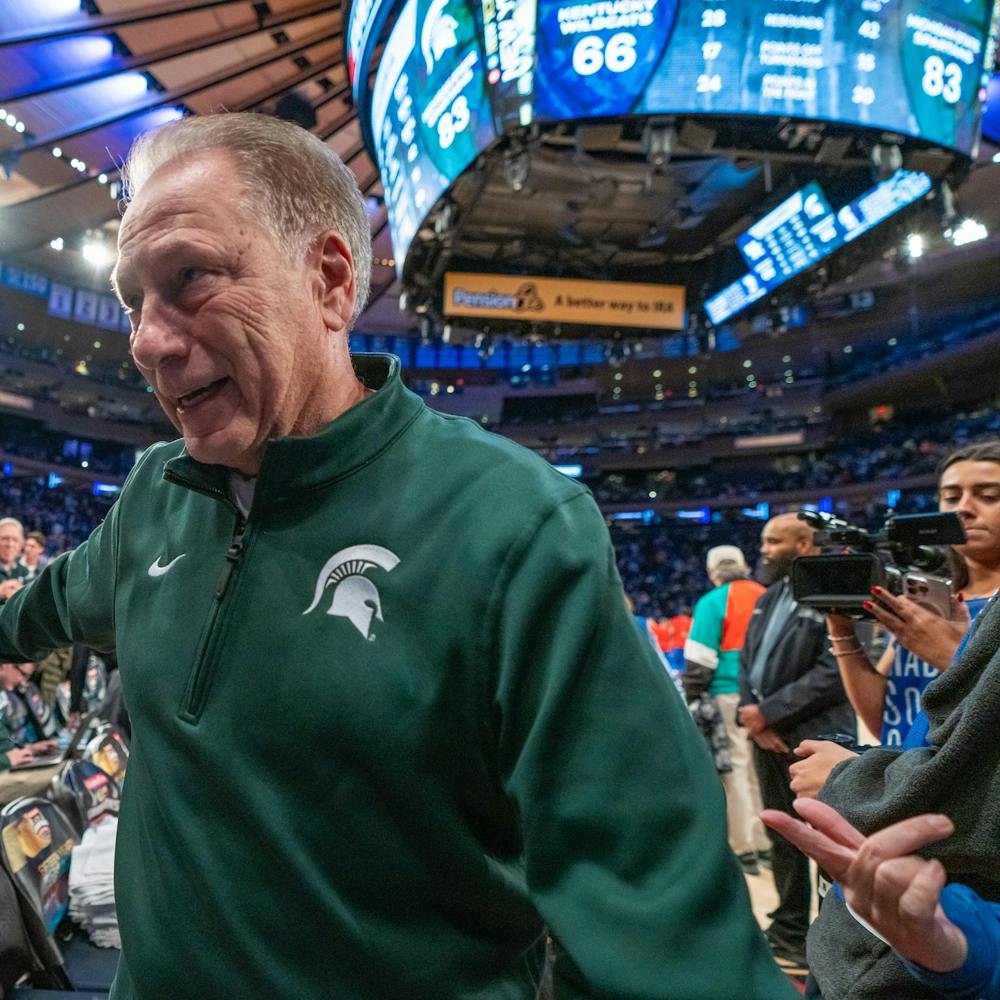“There is so much hate going on in the world not only towards people in the community but for people who support the community," said Biochem and Molecular Biology/Biotech junior Phebe Jones said. "[Pride collections are] just something to say I’m not afraid to show it.”
Here is a ranking of ten of the most prominent pride collections in large clothing corporations:
10. Nike
”The Nike collection…wasn’t a lot and it wasn’t very expansive," Jones said. "It was all the same general color scheme.”
While the "BeTrue" collection of Nike brandished different designs of both sneakers and athletic wear, not many were impressed by what it had to say for Pride.
"The colors they chose…didn’t feel right or prideful at all. I don’t like when…the only prideness they have on their products is their logo or name in rainbow because you’re just advertising yourselves but making it rainbow,” said Public Relations Senior Avery Tyson.
While theater junior Bee Neuhouser simply did not think that the clothes or shoes made sense for a pride collection, others have a deeper reason to distrust Nike's genuineness in wanting to create a collection in the first place.
"Places like Nike where they have child labor and slave labor…is one hundred percent just to make money…some places are seeing problems and trying to make a genuine effort but I think at the same time society focuses on the negative so companies that do use it to…make more money…ruin it for everyone,” said Jones.
9. Old Navy
Old Navy's "We Love All Love" collection got mixed reviews for multiple factors. The most positive being the different cuts with the same base design being expansive in sizes.
“I thought that was really nice because they said ‘Everyone likes this but not everyone fits in the same type of clothing,” said Jones.
Jones believed that the store was paying attention to shoppers' needs, making changes to bring in more customers by branding clothes as gender-neutral and a better sizing chart.
“That makes such a big difference for people with things like body dysmorphia, whether or not they’re part of the community," Jones said. "It’s not just stepping in the right direction for one group of people.”
However, Tyson was concerned with their representation of who they were targeting the clothes towards.
“Sometimes when they advertise two people, it is always a male-presenting and female-presenting individual, and this is pride," Tyson said. "How hard is it to have models that represent pride and people of the community? It just sat wrong with me like more performative.”
8. Abercrombie and Fitch
“I feel like they have pastels, so they say it's pride," said Tyson. "They even have a few pieces that have nothing on it to do with pride. They have a Clueless crop top, and I love Clueless, but it’s not a pride movie. It felt very last minute, thrown together, and not very prideful.”
The lack of diversity in the pieces seemed to rub people the wrong way, as well as what they decided to coin as pride merchandise, marketing products towards the community in the wrong way.
"[They] used the same two designs and same three pastel colors and also called the perfume ‘Fierce’; that gave me the ick,” said Environmental Economics and Management junior Miranda Triolet.
Support student media!
Please consider donating to The State News and help fund the future of journalism.
7. Coach
The main concern with this high-end brand's collection was not the classic Coach print just becoming rainbow on an array of styles and items, it was the price.
"It's not that the items were bad, but pride should be inclusive for everyone and having a backpack that's $650 dollars just isn’t inclusive," said Neuhouser. "I know that’s standard for Coach but it still rubbed me the wrong way.”
6. Hollister
“Some designs were cute and relatively affordable…I like the inclusion of many styles instead of one shirt and one dress,” said Triolet.
While Tyson believed that Hollister was a great and recognizable brand to have a pride collection, she believed that many times they just marketed a colorful piece of fabric as a pride piece.
5. UGG
“Some of the slides are the different sexuality flags and they are named off the type of shoe it is, not off the colors of the flag they are representing," said Jones. "I think that’s really nice because there’s so much pressure to put labels on people now.”
The creativity behind the collection with its open-to-interpretation attitude and a focus on shoes was not only refreshing to many, but also true to the UGG brand. However, others like Triolet wanted more diversity in pieces with 15 different fuzzy slides to choose from, but only two shirt designs.
4. American Eagle
“I really appreciated the muted colors and the fact that it wasn't in your face queer, but more subtle,” Neuhouser said.
While Tyson explained her frustration that the company had marketed regular jeans as pride jeans like many other companies do with ordinary clothing, others were happier with the subtlety.
“[I was] a big fan of the subtle designs," said Triolet. "[There were] some obnoxious slogan shirts but the little logo ones are excellent. Also rings…way to know your audience.”
3. Levi's
The prominent denim company opened its pride collection with shirts and merchandise that showcased individuals' pronouns that Tyson explained would allow people to literally wear their identity on their sleeve. However, some saw this as lazier marketing.
“I really like the direction, but just slapping pronouns on a shirt in rainbow isn’t as much effort as you think it is,” said journalism sophomore Charlotte Bongratz.
Triolet also said that their clothes were cute, but overpriced for what she explained were average products such as $100 sunglasses.
2. Urban Outfitters
“I love Urban Outfitters in general, but I really loved their connection…because it felt very functional, yet it truly felt like celebrating being part of the LGBTQIA+ community," said Tyson. "It felt genuine and it also felt very unique. I feel like a lot of pride collections feel exactly the same like…we stuck a rainbow on something, and this did not feel that way to me.”
This fan-favorite once again received the compliment of subtlety that could be confused for laziness in other brands.
“Sometimes I think subtle pride merch…are not great like just adding a little rainbow to a t-shirt or something, but they have some really subtle pieces like hats…that I do think are still effective and cute while being subtle," said Tyson. "I could see myself actually wearing these and in and outside of pride.”
1. Target
"Target is number one because of one factor: they were the one brand that specifically advertised people of color with pride…because people of color have an incredibly important history in terms of pride and almost no brands acknowledge that,” said interior design sophomore Ali Moore.
Along with this representation in advertising, Neuhouser explained that having the designer of the line be a part of the community was a huge step for pride collections.
"You could tell thought went into the designs, and they had actual queer people work on…They made funny, non-offensive gay stereotype jokes,” Triolet said.
Neuhouser explained that Target is the pride collection they actively sought out this pride month.
“As a plus-sized, gender non-conforming queer person, often the clothes I can wear that are inexpensive and fit me, if I want something to show my pride, is in pride collections," Neuhouser said. "Like, the target pride collection. I got their Trans Rights shirt for $15 and it actually fit. I'll participate in rainbow capitalism for that.”
While the ranking of these collections is trendy and categorizes them with simplicity, many believe that these pride collections have a more complicated background, finding these collections to foster performative advocacy that looks to make a profit off of marginalized groups and makes the company's appearance that much more attractive.
“I feel like they are often targeted… towards just showing that the company is an ally when they don't do much to actually support LGBTQIA causes," Tyson said. "I feel like often they feel so performative to me. They feel fake like ‘Look, once a year for one month we’re going to say we support LGBTQ and never mention it again.“
Tyson believes that companies use these collections as a scapegoat for what they refused to advocate for the rest of the year. She said that while the company is making more money, it likely isn't going to support the community they are representing. She believes that, like Target did this past year, companies should utilize more actual representation in designers who understand the nuances behind the community, as well as sharing the wealth with the community.
“I think having proceeds, either part of them or all of them, go to different charities that support the community," Tyson said. "There’s a lot of charities to support homeless…queer youth or help transgender individuals with surgeries. There’s so many charities that these billion-dollar companies could put a tiny bit of money into that could really make a difference.”
However, Neuhouser explained that many companies on this list are supporting the community through real efforts; American Eagle is donating $250,000 to GLSEN, an advocacy group teaching tolerance, and Coach is partnering with three different charities.
With companies working harder every pride month to represent the people who buy from them, the LGBTQ+ community has access to clothing that shows the passion that they hold for their identity.
“What we wear is definitely one of the ways that we display our values,” Jones said.
Phebe Jones, Avery Tyson, Kendall Donaldson, Miranda Triolet, Charlotte Bongratz, and Ali Moore ranked these pride collections.
Discussion
Share and discuss “Pride Collection rankings: From celebration to performance ” on social media.






